Overview of 3D home design technology
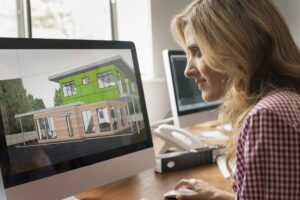
3D home design software allows users to create digital 3D models of architectural spaces and building interiors. This technology has revolutionized the home design process by enabling more accurate visualizations and efficient planning.
Benefits of designing your home in 3D
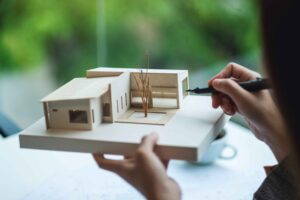
Key benefits of 3D home design include being able to visualize spaces more clearly, test different layouts and finishes, identify design issues earlier on, create engaging renderings and walkthroughs, and streamline communication between stakeholders.
Key features to look for in 3D home design software

When evaluating 3D home design solutions, key features to consider include an easy-to-use interface, extensive libraries of architectural objects and materials, advanced rendering capabilities, support for importing/exporting files in different formats, and integration with other technologies like VR and AR.
Essential Considerations When Designing a Home in 3D
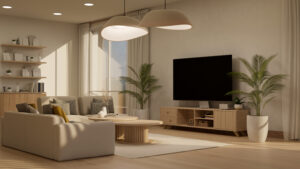
Determine the scope of your design project
It’s important to determine upfront whether you are designing a new home construction project versus renovating an existing structure, as each scenario has different budget, timeline, and technical considerations.
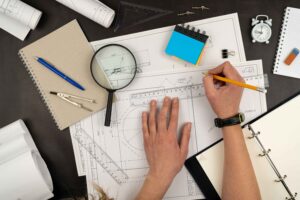
New construction versus renovation
New builds allow full creative freedom but require more upfront planning regarding site work, architectural plans, systems design, etc. Renovations involve working within existing structural constraints and potential preservation requirements.
Budget and timeline implications
The scope also impacts overall budget and duration, for example full custom builds typically require more design time and higher costs versus remodeling projects or buying a spec home.
Choose the right 3D design software

Choosing software that aligns with your skill level, budget, and design goals is key:
Ease of use
Beginners generally prefer solutions with simple and intuitive UIs for quicker learning, while power users may value more advanced functions and flexibility.
Features and functionality
Determine what core modeling, visualization, and reporting tools you require like layout planning, photo-realistic renderings, lighting design, estimating, etc.
Supported file formats
Check if the software allows importing/exporting files in formats like CAD, BIM, PDF, image files, etc. for expanded compatibility.
Think about the look and feel you want

Early on, conceptualize the overall architectural style, finishes, furnishings, materials, and lighting that will bring your design vision to life visually.
Architectural style and finishes
Wood siding or brick exterior? Subway tiles or marble countertops in bathrooms? Hardwood floors or carpeted bedrooms? Traditional or contemporary style? These choices impact aesthetics.
Furniture, fixtures, and materials
Modeling interior elements like furniture, window treatments, tile backsplashes, hardware, and decor visually conveys overall ambience and functionality.
Lighting design
Proper lighting design principles regarding ambient, task, and accent lighting help showcase architectural details and create inviting moods.
Best 3D Home Design Software Solutions
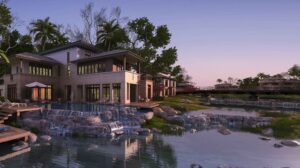
User-friendly options for beginners

Intuitive, entry-level solutions to check out include:
Space Designer 3D
Straightforward tool for 2D floor plan creation and 3D modeling ideal for amateurs. Offers 500+ furniture objects and guided tutorials for learning.
HomeByMe
Web and mobile app allowing beginners to easily design layouts, edit finishes/textures, access 70,000 3D objects, and create walkthroughs.
Live Home 3D
Mac/Windows solution focused on ease of use with drag-and-drop functionality, library of materials/textures, and realistic 3D rendering.
Advanced solutions for experienced users

For professional-grade designing and modeling, consider investing in:
AutoCAD
Industry-standard CAD software used by architects globally for 2D drawings and 3D modeling, known for versatility and precision.
SketchUp Pro
Intuitive 3D modeling tool from Trimble offering advanced functionalities like custom design workflows, modeling from scratch, and next level photorealistic rendering.
Chief Architect
Specialist software for professionals packing robust architectural design features alongside powerful 3D modeling and visualization capabilities.
Other viable 3D software options

Those wanting expanded choice should also explore these alternatives:
Floorplanner
Browser-based application focused specifically on creating home floor plans while offering basic 3D functionality.
Roomle
Cost-effective web app optimal for real-estate professionals to quickly draft 2D/3D floorplans, generate mockups, and create VR/AR experiences for spaces.
Sweet Home 3D
Free and open-source interior design app for Windows/Mac/Linux allowing modeling of floor plans, arranging furnishings, and realistic 3D rendering minus advanced features.
Bringing Your 3D Designs to Life

To make conceptual designs more tangible, leverage technologies like photorealistic rendering, VR/AR, and 3D printing to showcase ideas and bridge the gap between digital models and physical spaces.
Creating realistic 3D renderings
Integrating accurate colors, lighting, shadows, reflections and textures makes designs truly leap off the page helping clients visualize the end results. Ensure the software offers advanced rendering capabilities.
Integrating VR and AR technology
Some solutions let you experience designs more immersively through virtual reality headsets, or overlay digital elements onto real physical environments via augmented reality providing next level visual analysis opportunities pre-construction.
Printing 3D models
For more hands-on interaction and spatial awareness during the review process, explore printing scaled physical models of designs using popular 3D printing solutions like MakerBot, Ultimaker, Formlabs, etc.
Future of 3D Home Design Technology

As innovation marches forward, 3D design technology promises to keep simplifying and elevating the home creation process through enhanced realism, smarter features, and increased adoption.
Streamlining the design process further
Expect continued improvements in areas like more intelligent editing tools, real-time collaboration allowing expanded team member input, and tighter integration with related software solutions in areas like construction estimation, project management, sales, etc.
Enhanced visualization capabilities
Ongoing graphics enhancements leveraging VR/AR technologies will make experiencing designs before they are built increasingly lifelike, dynamic, and accessible to more end users through various devices.
Increased adoption and accessibility
Easier learning curves, lower costs, and growing awareness of benefits will soon make 3D home design technology indispensable for amateurs and professionals alike throughout the home building life cycle.






